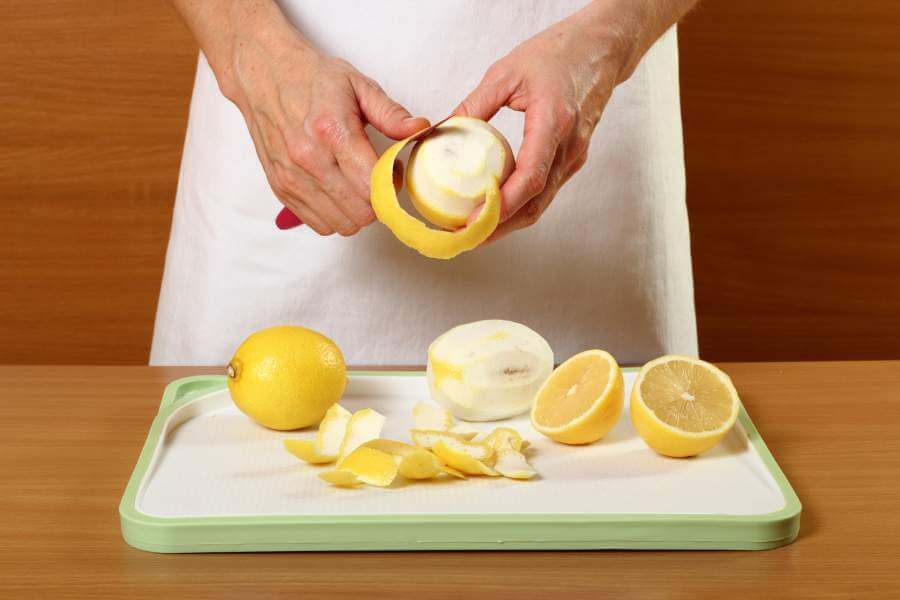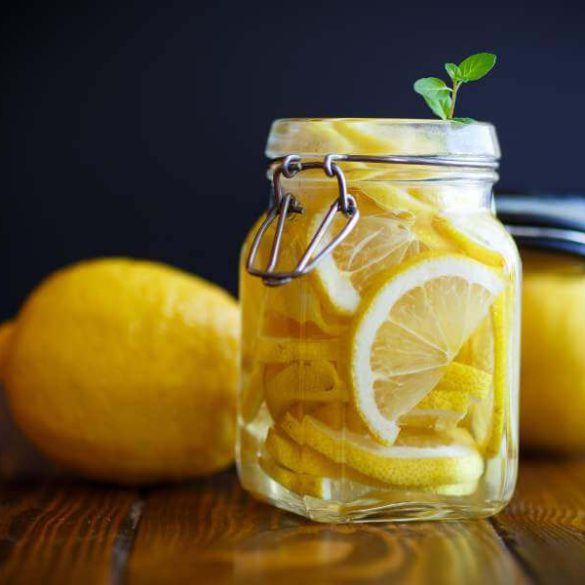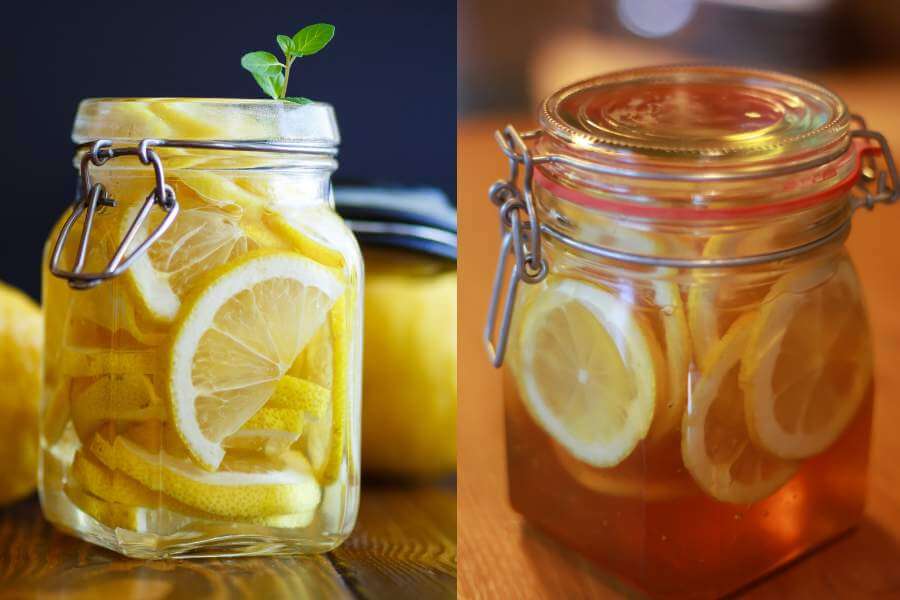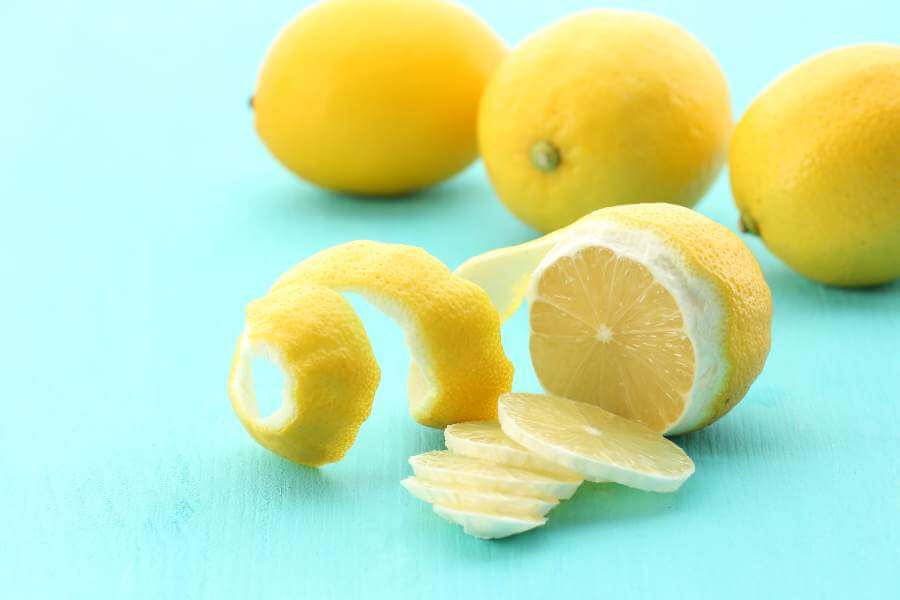We most often waste fresh, unused lemon peels just because we don’t know how to preserve them. Even we lack knowledge of its uses. But this lemon peel can be one of the tastiest homemade pickles or candies for tangy citrus lemon lovers. Additionally, citrus peels, especially organic lemons, can be used in various recipes to add a burst of flavor and aroma.
Aside from China, the preservation of lemon peels is quite famous around the world. People from Asia, Europe, the Middle East, etc., including the Middle Eastern region, have their own ways of preserving lemon peel. You may find so many recipes available for Indian-style or Chinese-style lemon peel pickles. In Chinese style, tangy and sour-sweet-flavored yellow candy-style preserved lemon peel with a hint of sea salt is more famous.
In this post, I have described the most elegant Chinese Hawaiian way of Chinese Preserved Lemon Peel Recipe, keeping all its flavor, tenderness, and health benefits intact, including the preserved lemon rind. Also, this recipe shows the most effective and easiest way to get the actual Chinese preserved lemon peel candy’s tenderness.

Kids will be really fond of this food. And you can use it in different cuisines to enhance the taste. I have tried preserved lemon in different homemade salads and dressings. In Moroccan Chicken Tajin and Sticky Lemon Chicken, using preserved lemon peel and olives tagines really helps a lot. Each lemon peel candy contains a rich amount of vitamin C. So, undoubtedly, my Chinese-Hawaiian preserved lemon peel recipe is a great choice for enhancing your immune power.
The process of making preserved lemon peel with cloves is relatively simple yet requires some patience. Let’s dive into the fermentation recipe.

Ingredients
- 4 Large Fresh Yellow Lemon
- 2 Cups White Granulated Sugar
- Water for Boiling
- 1 teaspoon Salt
Instructions
Step 1: Separate and Cut the Lemon Peels
Wash and clean four large, fresh yellow lemons. Take a sharp knife and use it to cut the lemons into four pieces. Now separate the lemon peels from the lemon pieces. Cut the lemon peels into thin strips.
Remove the pith from them. Otherwise, it will increase the bitterness of preserved lemon peels. Additionally, make sure the strips are of the desired inch size for optimal preservation.
Step 2: Boil and Drain Lemon Peel strips
Boil the lemon peels for 10 minutes. Drain them and keep them for a while. Then again, boil and drain the lemon peels. Don't do it more than two times. If you find the lemon peels hard enough, you can consider boiling and draining them one more time.
Step 3: Add Sugar and water
Pat the lemon peels dry. In a pan, add 2 cups of water and 2 cups of sugar. Turn on the stove and stir continuously. Do it until it turns into sugar syrup.
Now turn off the stove and chill it. Finally, add a pinch of seasoning for an extra burst of flavor. In a pantry jar, place all the boiled lemon peels.
Add the sugar syrup and some salt. Stir them lightly. You can add some citric acid to increase the tangy flavor. Additionally, ensure that the jar is kept at room temperature for optimal preservation.
Step 4: Preserve and Enjoy Candied Lemon Peels
Store and keep the preserved lemon peels in a cool, dark place. You will find the lemon peels fully candied. Enjoy the preserved Chinese lemon peels with added nutrition.
My Secret Recipe Tips

I have added some recipe tips here in this section which are quite helpful for avoiding any mishaps while cooking.
- Try to trim off the pith from lemon peels as much as possible. Excess pith contributes to the bitterness of lemon peel.
- Use a peeler or grater to remove the lemon peels. Or you can use a sharp knife to cut it into strips or slices. The best way is to make strips out of it. Using tools is better than using hands to separate lemon peels from lemons.
- Store the lemon peels in a cool and dark place. Refrigerators will be the best to use.
- Don’t boil and drain too much. It may reduce the health benefits of lemon peels.
F.A.Q.
Is Preserved Lemon The Same as a Pickled Lemon?
Preserved lemon and pickled lemon are similar in that they both involve preserving lemons in a brine or salt solution. However, there are some differences between the two. Preserved lemons are typically made by packing lemons in salt and letting them ferment for several weeks or months. This process softens the lemon peel and mellows the flavor of the fruit, resulting in a unique and intense citrus flavor. The preserved lemons can be used in a variety of dishes, such as tagines, salads, and sauces.

On the other hand, pickled lemons are made by submerging lemons in a vinegar-based brine and allowing them to pickle for a shorter period of time, usually just a few days or weeks. The acidity of the vinegar helps to preserve the lemons and gives them a tangy sweet flavor. Pickled lemons can be used in many of the same ways as preserved lemons but may have a slightly different taste due to the vinegar.
So while both preserved lemon and pickled lemon involve preserving lemons, they have different methods and flavors, giving each its own unique culinary application.
How do I Preserve Fresh Lemon Peels?
Lemon peels are used for different purposes. In decorating pancakes, salad dressing, or adding extra flavor to different cuisines, etc., using lemon peel is a great help. The preservation process for lemon peels is very easy.
Take the fresh, thoroughly washed yellow lemons. Grate the lemon peels until they reach the juicy part of the lemon. Gather all the grated lemon peels, preserve them in a small glass jar, and store them in the refrigerator. You can preserve them by taking some very simple steps.
What is The Best Use of Lemon Peel?

First, you can make tasty candy from lemon peels. Cut the lemon peel into thin slices and remove the white pith. Boil and drain the lemon peels. Then mix it up with sugar syrup. Moreover, you can use lemon peels to garnish tea, water, salad, and pasta. I made Gremolata from lemon peels, which is a great addition to intensify the taste of Italian Pasta. Aside from culinary uses, lemon peels work as a good remedy for the face.
Is Lemon Peel Acidic or Alkaline?
Lemon peel is acidic. Though it is less acidic than lemon juice, the pH of lemon peel is below 7. It contains a good amount of citric acid, and that’s why you get the tangy and sour flavor. Citric acid is a weak acid. So, the lemon peel is acidic, not alkaline.
Is Eating Lemon Peels Good For Your Health?
Yes, it is. Lemon peels contain different vitamins and minerals like folate, potassium, calcium, and magnesium. Lemon peels are abundant in antioxidants and flavonoids, which reduce oxidative stress. It also helps to maintain digestive, skin, and heart health. The essential oil present in lemon peels has a great impact on our skin’s health. So consuming lemon peels regularly can be a good habit for our health.
What Kind of Lemons Are Good For Preserving?
Any variety of lemon can be used for preserving, but Meyer lemons are often preferred due to their sweeter and more fragrant flavor. Meyer lemons have thinner skin and less acidity compared to other lemon varieties, which makes them ideal for preserving in sugar or salt. However, if you prefer a more tart and tangy preserved lemon, you can use regular lemons as well.
Bottom Line
I hope you found this information on the Chinese Preserved Lemon Peel Recipe and the various uses of lemon peel helpful. Whether you choose to preserve the lemon peels or use them immediately, they can add a burst of tangy flavor to your dishes. So go ahead, explore the delightful possibilities that lemon peels have to offer, and enjoy their zesty goodness in your daily life.


